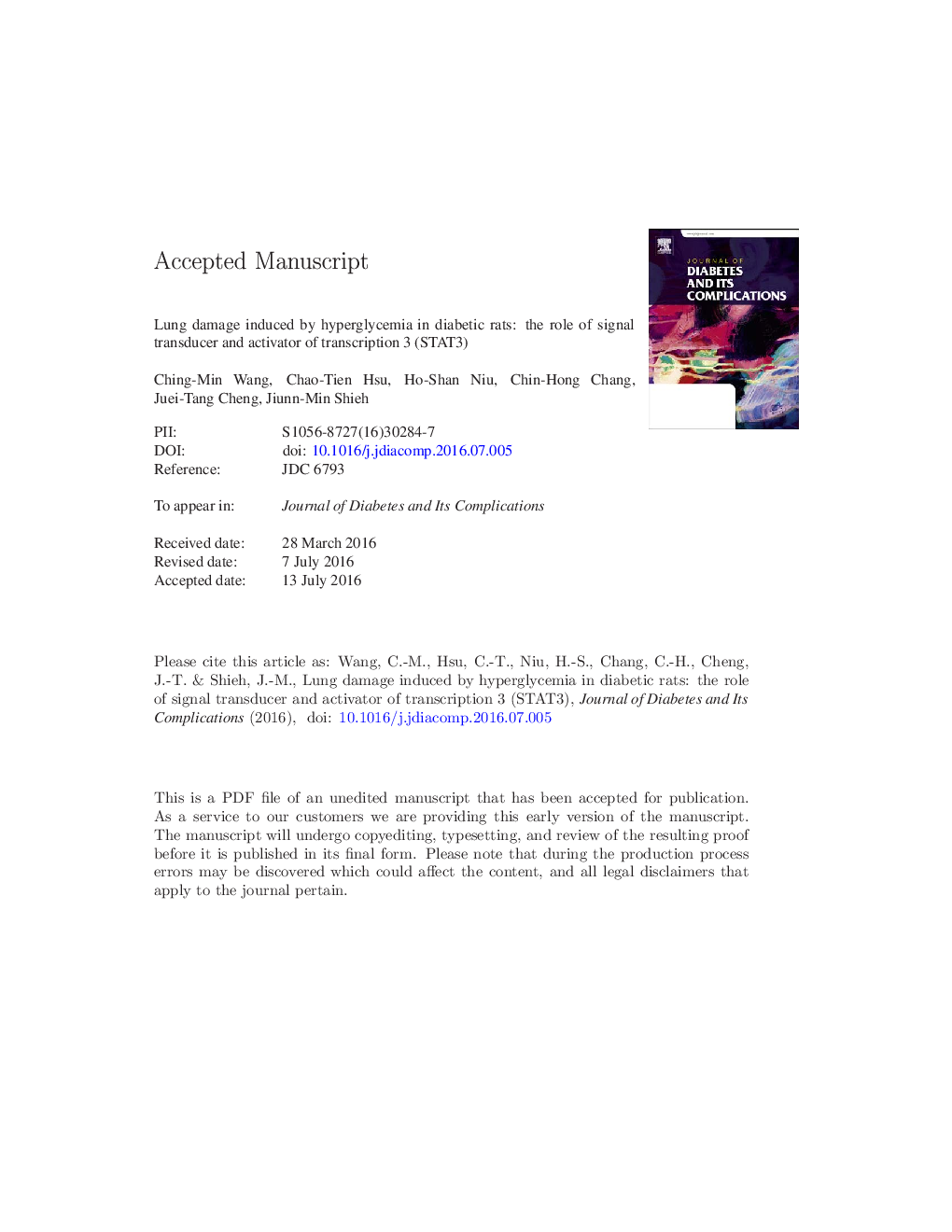| Article ID | Journal | Published Year | Pages | File Type |
|---|---|---|---|---|
| 5901857 | Journal of Diabetes and its Complications | 2016 | 50 Pages |
Abstract
Increased evidence has shown that diabetes can be a risk factor for pulmonary fibrosis. The objective of this study was to use streptozotocin-induced diabetic rats (STZ rats) to assess the possible signals associated with lung damage in diabetic disorders. The expression levels of signal transducer and activator of transcription 3 (STAT3) and connective tissue growth factor (CTGF) in lung tissues were measured through Western blot analysis and real-time PCR. Additionally, the potential mechanisms were confirmed in cultured rat lung cell line (L2) incubated in high-glucose (HG) medium to mimic the in vivo changes. The pathological changes in the lung tissues of STZ rats were characterized using the bleomycin-treated tissues as reference. Moreover, the higher expression levels of STAT3 and CTGF in the lung tissues of STZ rats were reversed by treating the hyperglycemia. CTGF expression increased following the higher expression of STAT3 in the cultured L2 cells exposed to HG, and this change was reversed by siRNA treatment specific for STAT3. Stattic, at a dose sufficient to inhibit STAT3, reduced the CTGF levels in the lungs of STZ rats. In conclusion, STAT3 enhanced CTGF expression in a type-1 diabetes model associated with lung damage. Thus, STAT3 inhibitors may be developed to improve diabetes-induced lung damage in the future.
Related Topics
Life Sciences
Biochemistry, Genetics and Molecular Biology
Endocrinology
Authors
Ching-Min Wang, Chao-Tien Hsu, Ho-Shan Niu, Chin-Hong Chang, Juei-Tang Cheng, Jiunn-Min Shieh,
